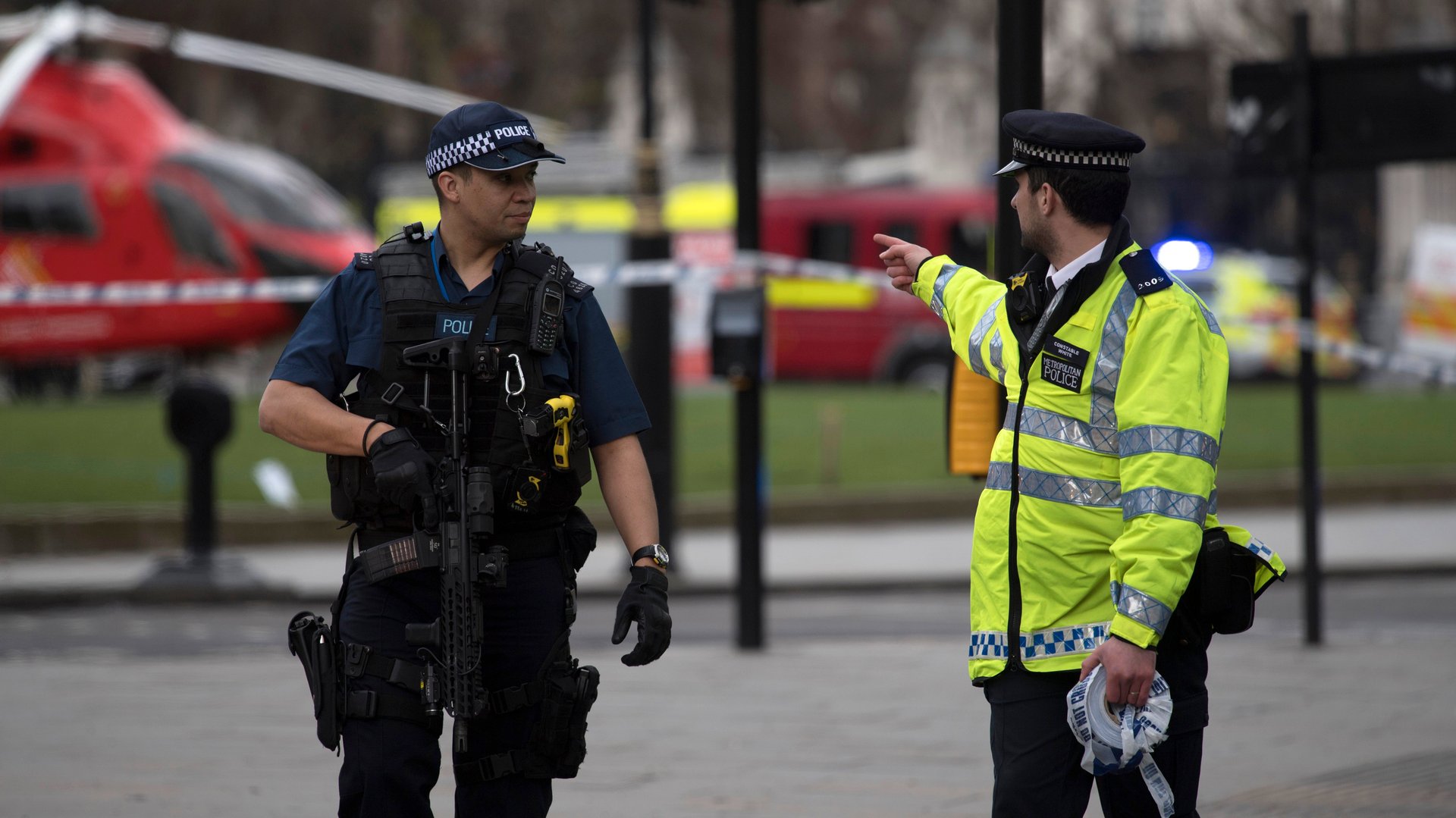How the UK police deal with a terrorist attack when most officers don’t carry guns
There has been an attack near the British parliament in London today (Mar. 22). The police have confirmed that four have died, including an officer and the attacker, and at least 20 have been injured during the attack, which is being treated as a terrorist incident. Among the steps taken to assure the public, London’s police force sent this tweet:


There has been an attack near the British parliament in London today (Mar. 22). The police have confirmed that four have died, including an officer and the attacker, and at least 20 have been injured during the attack, which is being treated as a terrorist incident. Among the steps taken to assure the public, London’s police force sent this tweet:
To Londoners, the extra detail about cops carrying guns is not unusual, because most police officers in the UK (except in Northern Ireland) aren’t armed. The statement underlines the severity of the incident, which is being treated as a terrorist incident by the authorities.
For a rich country with more than 60 million people, the UK’s firearm-free police is unique. The BBC explains that this goes back to the 19th century, when police without firearms wore blue uniforms to differentiate themselves from armed members of the infantry, who wore red uniforms. That idea of community policing without guns stuck. When firearms were given to the police in the early 20th century, only trained officers who could prove they needed one, got one.
Today, fewer than 1 in 20 police officers in England and Wales carries a gun. These two territories employ 124,000 police officers, including only 5,600 authorized firearms officers. Armed officers very rarely discharge their weapons—there are generally only a handful of incidents per year.
Following recent terror attacks across Europe, in 2016 the London police deployed 600 more armed officers. Parts of the city, including parliament, already have armed officers always on duty, which explains the rapid response to the attack near the parliament.
According to the Guardian, a survey of British police officers earlier this year found that a quarter of them said that they should routinely carry guns.